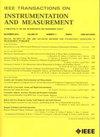A Tightly Coupled Method for Indoor Vehicle Navigation Based on Smartphone IMU and BLE
IF 5.6
2区 工程技术
Q1 ENGINEERING, ELECTRICAL & ELECTRONIC
IEEE Transactions on Instrumentation and Measurement
Pub Date : 2024-10-16
DOI:10.1109/TIM.2024.3481552
引用次数: 0
Abstract
Nowadays, smartphone-based localization, which is the most common way for car drivers to navigate, has attracted considerable attention. In environments where global positioning system (GPS) signals are obstructed, such as indoor parking lots and large tunnels, smartphone-based localization methods still face challenges in accuracy and update frequency. Current methods utilize inertial measurement units (IMUs) to achieve short-term, high-accuracy position estimation. However, most smartphones are equipped with low-precision IMU due to cost constraints, leading to significant cumulative errors over time caused by sensor noise and external interference. Moreover, indoor positioning methods based on Bluetooth low energy (BLE) can achieve long-term and higher precision positioning estimation. However, due to the limitation of smartphone power consumption, real-time scanning and response of BLE cannot be achieved. BLE scans can only be returned after the scanning cycle is completed. Therefore, when the vehicle is moving at high speed, the update frequency of the BLE-based positioning method is lower. Furthermore, due to the asynchronous reception of BLE, motion distortion will occur, seriously affecting positioning accuracy. To address the above problems, we propose a tightly coupled indoor vehicle positioning and navigation algorithm based on smartphone IMU and BLE, named the CFBS (Synthesis of Coordinate transformation and Forward-Backward propagation) algorithm. The coordinate transformation algorithm converts the inertial dynamics from the smartphone to the vehicle, and the backward propagation algorithm compensates for BLE motion distortion and enhances positioning frequency. Finally, IMU bias and position estimation are achieved using a tightly coupled extended Kalman filter (EKF). Our algorithm is tested in real business scenarios to verify its effect, which effectively improves the positioning frequency and accuracy of indoor positioning services (ILBS).基于智能手机 IMU 和 BLE 的室内车辆导航紧密耦合方法
如今,基于智能手机的定位技术已引起广泛关注,它是汽车驾驶员最常用的导航方式。在全球定位系统(GPS)信号受阻的环境中,如室内停车场和大型隧道,基于智能手机的定位方法在精度和更新频率方面仍面临挑战。目前的方法利用惯性测量单元(IMU)来实现短期、高精度的位置估计。然而,由于成本限制,大多数智能手机都配备了低精度的惯性测量单元(IMU),这导致传感器噪声和外部干扰会随着时间的推移产生显著的累积误差。此外,基于蓝牙低功耗(BLE)的室内定位方法可以实现长期和更高精度的定位估算。然而,由于智能手机功耗的限制,BLE 无法实现实时扫描和响应。BLE 扫描只能在扫描周期结束后返回。因此,当车辆高速行驶时,基于 BLE 的定位方法的更新频率较低。此外,由于 BLE 的异步接收,会出现运动失真,严重影响定位精度。针对上述问题,我们提出了一种基于智能手机 IMU 和 BLE 的紧密耦合的室内车辆定位和导航算法,命名为 CFBS(坐标变换和前向-后向传播合成)算法。坐标转换算法将智能手机的惯性动态转换为车辆的惯性动态,后向传播算法补偿 BLE 运动失真并提高定位频率。最后,使用紧密耦合的扩展卡尔曼滤波器(EKF)实现 IMU 偏差和位置估计。我们的算法在实际业务场景中进行了测试,验证了其效果,有效提高了室内定位服务(ILBS)的定位频率和精度。
本文章由计算机程序翻译,如有差异,请以英文原文为准。
求助全文
约1分钟内获得全文
求助全文
来源期刊

IEEE Transactions on Instrumentation and Measurement
工程技术-工程:电子与电气
CiteScore
9.00
自引率
23.20%
发文量
1294
审稿时长
3.9 months
期刊介绍:
Papers are sought that address innovative solutions to the development and use of electrical and electronic instruments and equipment to measure, monitor and/or record physical phenomena for the purpose of advancing measurement science, methods, functionality and applications. The scope of these papers may encompass: (1) theory, methodology, and practice of measurement; (2) design, development and evaluation of instrumentation and measurement systems and components used in generating, acquiring, conditioning and processing signals; (3) analysis, representation, display, and preservation of the information obtained from a set of measurements; and (4) scientific and technical support to establishment and maintenance of technical standards in the field of Instrumentation and Measurement.
 求助内容:
求助内容: 应助结果提醒方式:
应助结果提醒方式:


